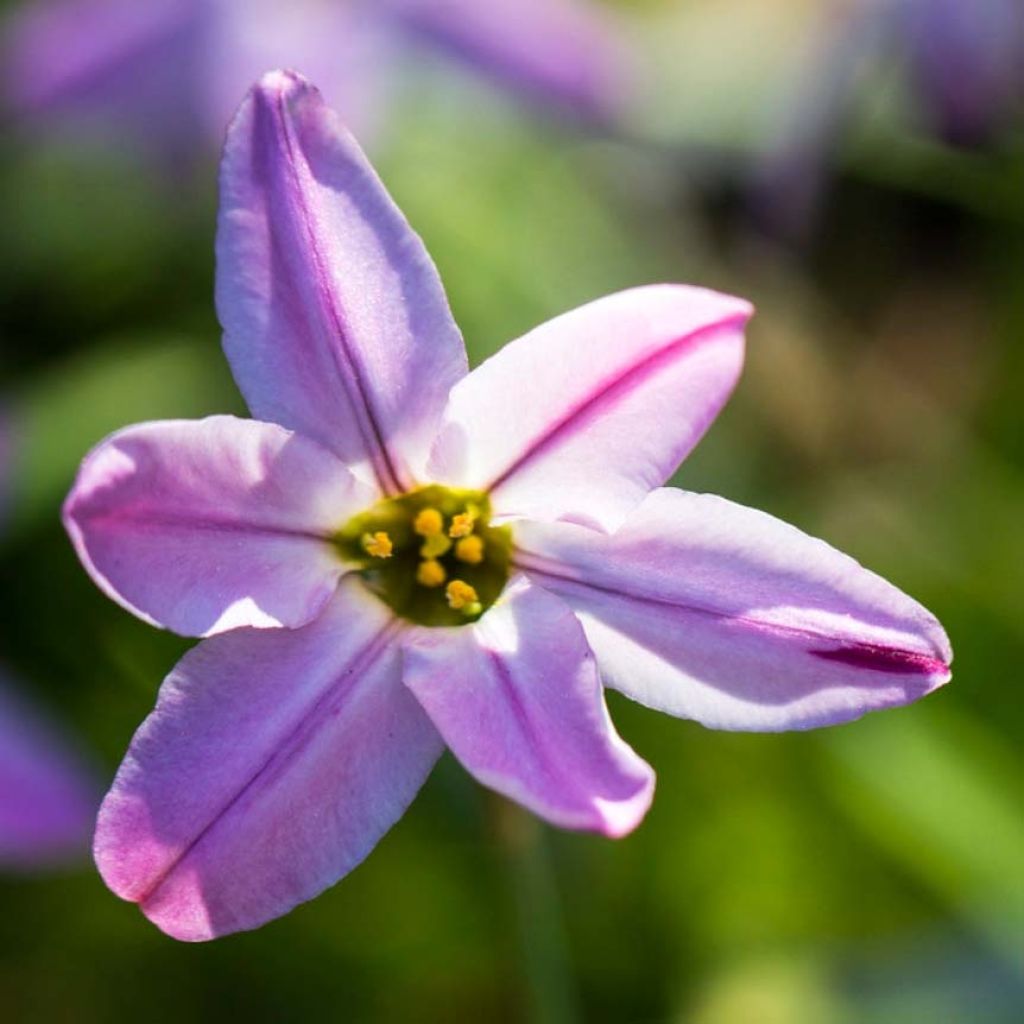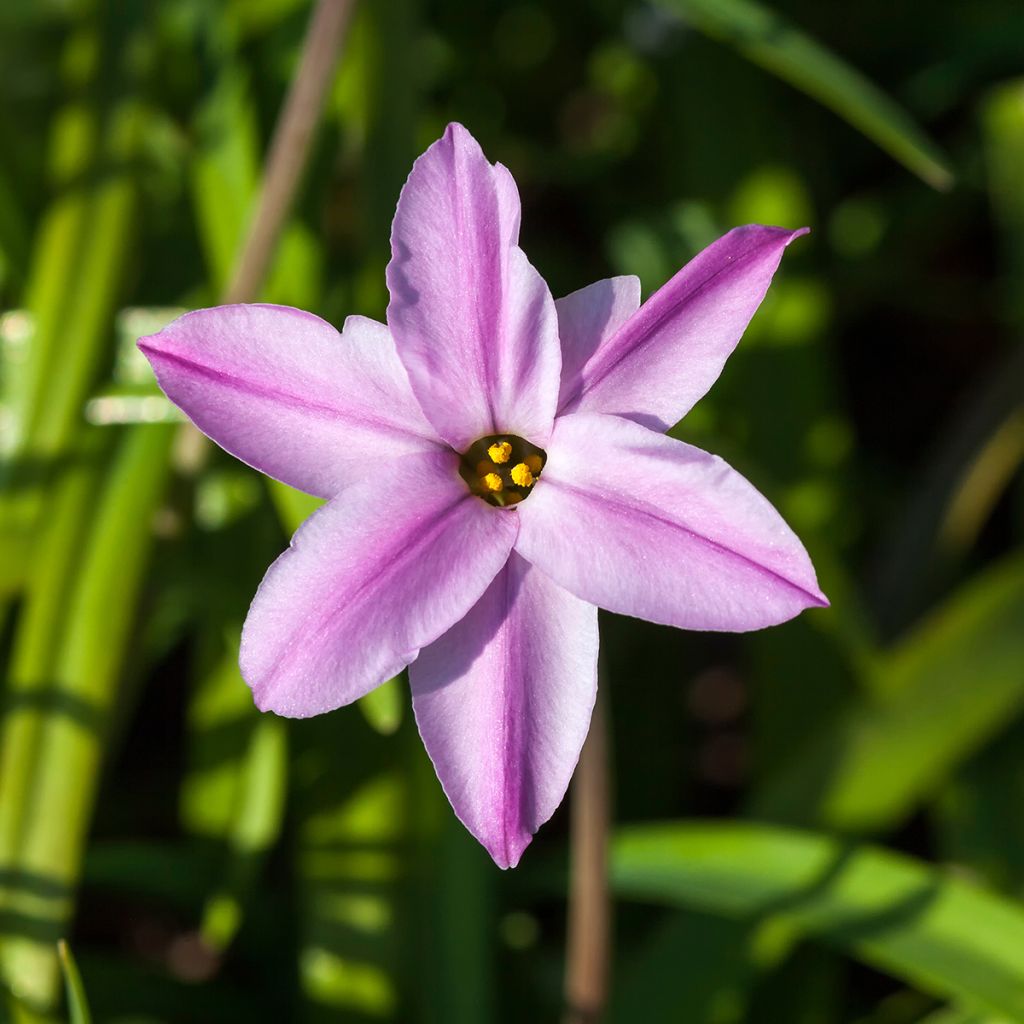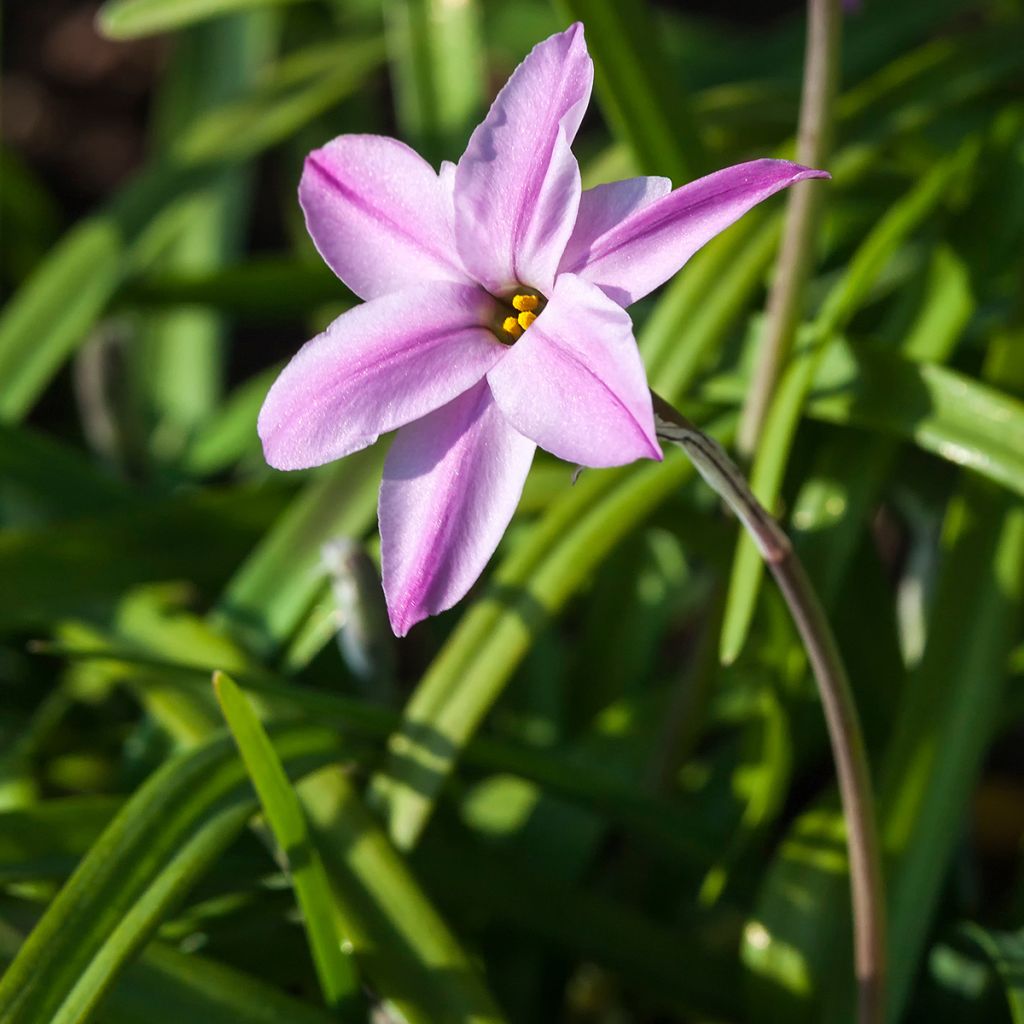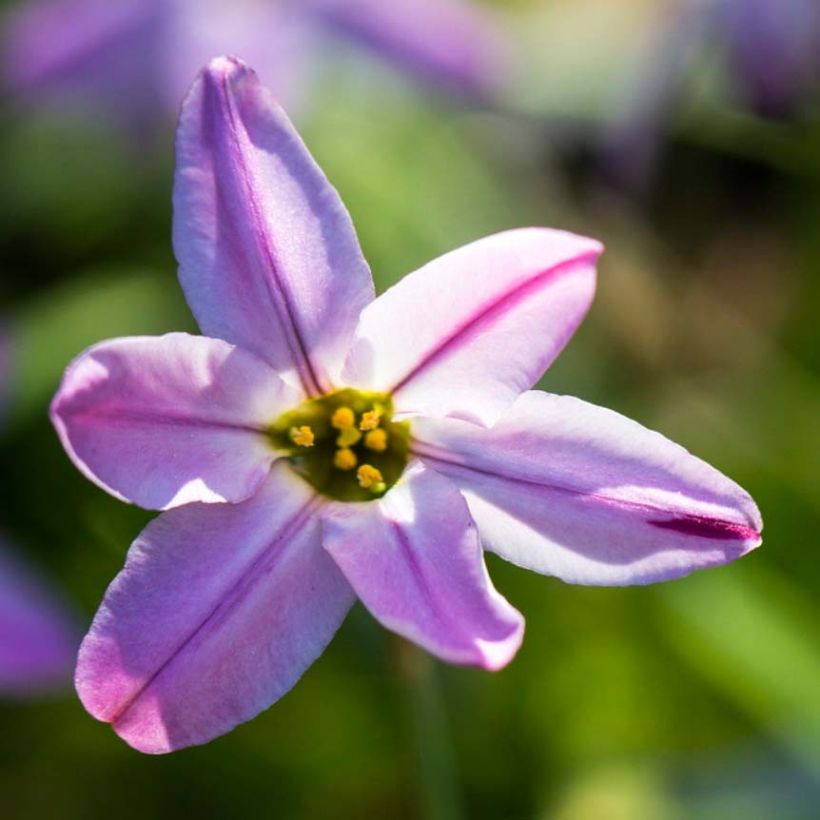

Ipheion uniflorum Tessa - Etoile de printemps


Ipheion uniflorum Tessa - Etoile de printemps


Ipheion uniflorum Tessa - Etoile de printemps
Ipheion uniflorum Tessa
Ipheion uniflorum Tessa
Springstar, Spring Starflower
This plant carries a 6 months recovery warranty
More information
We guarantee the quality of our plants for a full growing cycle, and will replace at our expense any plant that fails to recover under normal climatic and planting conditions.
From €5.90 for pickup delivery and €6.90 for home delivery
Express home delivery from €8.90.
Does this plant fit my garden?
Set up your Plantfit profile →
Description
The Ipheion uniflorum 'Tessa' is a charming bulb with large spring flowers, in pink star shapes. Its narrow foliage, with a slight garlic scent, appears in autumn, then disappears after flowering to pass the summer without any problems. Hardy and easy to naturalize, it will only require well-drained and warm soil. It will work wonders in rock gardens, on the edge of woodlands, and on slopes.
The Ipheion uniflorum, also sometimes known as Tristagma unflora, is a bulbous plant native to dry and rocky meadows in Argentina. Botanists have recently classified it in the Amaryllidaceae family, which also includes garlic, snowdrops, daffodils, and agapanthus.
Between February and May depending on the region, the 'Tessa' ipheion produces large pale pink star-shaped flowers with darker central veins, perched solitary on stems about 15 cm (6in) high. They give off a subtle honey fragrance. In mild enough climates, the ipheion can even flower during winter. The bluish-green foliage, narrow and elongated, resembles a grass and emits a slight garlic scent when crushed. It appears in autumn and disappears once flowering is finished to enter dormancy. Thus, the plant easily withstands the heat and dryness of summer.
Despite its South American origins, the ipheion or spring star is very hardy, as long as the soil is perfectly drained; if the bulb remains moist during winter, there is a high risk of rotting. Any sandy and rocky substrate, not too poor, will suit it perfectly, but it particularly appreciates hot and dry climates. It should be noted that in areas heavily invaded by voles, its longevity can be quite low. Its wild and simple nature allows it to find a place in sunny beds (it also tolerates light shade), in rock gardens, or to vegetate maintenance-free slopes in addition to a ground cover like sedums. Once established, the ipheion multiplies very easily and quickly through its numerous bulblets. Associated with daffodils, grape hyacinths, or even Iris bucharica, the 'Tessa' ipheion will form over the years a beautiful spring carpet, constantly renewing with vibrant colours.
Report an error about the product description
Ipheion uniflorum Tessa in pictures


Plant habit
Flowering
Foliage
Botanical data
Ipheion
uniflorum
Tessa
Amaryllidaceae
Springstar, Spring Starflower
Cultivar or hybrid
Planting and care
Plant Ipheion uniflorum 'Tessa' in autumn in a sunny or semi-shaded position. Place it in fairly rich, well-drained soil, 8 cm (3in) deep, and space the bulbs 8 cm (3in) apart. They do not require any particular maintenance. You can plant them in a rock garden. During the dormant period in summer, leave them alone, they should not be watered. In colder regions, provide protective mulch. Protect them from slugs and snails, which love young shoots.
Planting period
Intended location
Care
-
, onOrder confirmed
Reply from on Promesse de fleurs
Haven't found what you were looking for?
Hardiness is the lowest winter temperature a plant can endure without suffering serious damage or even dying. However, hardiness is affected by location (a sheltered area, such as a patio), protection (winter cover) and soil type (hardiness is improved by well-drained soil).

Photo Sharing Terms & Conditions
In order to encourage gardeners to interact and share their experiences, Promesse de fleurs offers various media enabling content to be uploaded onto its Site - in particular via the ‘Photo sharing’ module.
The User agrees to refrain from:
- Posting any content that is illegal, prejudicial, insulting, racist, inciteful to hatred, revisionist, contrary to public decency, that infringes on privacy or on the privacy rights of third parties, in particular the publicity rights of persons and goods, intellectual property rights, or the right to privacy.
- Submitting content on behalf of a third party;
- Impersonate the identity of a third party and/or publish any personal information about a third party;
In general, the User undertakes to refrain from any unethical behaviour.
All Content (in particular text, comments, files, images, photos, videos, creative works, etc.), which may be subject to property or intellectual property rights, image or other private rights, shall remain the property of the User, subject to the limited rights granted by the terms of the licence granted by Promesse de fleurs as stated below. Users are at liberty to publish or not to publish such Content on the Site, notably via the ‘Photo Sharing’ facility, and accept that this Content shall be made public and freely accessible, notably on the Internet.
Users further acknowledge, undertake to have ,and guarantee that they hold all necessary rights and permissions to publish such material on the Site, in particular with regard to the legislation in force pertaining to any privacy, property, intellectual property, image, or contractual rights, or rights of any other nature. By publishing such Content on the Site, Users acknowledge accepting full liability as publishers of the Content within the meaning of the law, and grant Promesse de fleurs, free of charge, an inclusive, worldwide licence for the said Content for the entire duration of its publication, including all reproduction, representation, up/downloading, displaying, performing, transmission, and storage rights.
Users also grant permission for their name to be linked to the Content and accept that this link may not always be made available.
By engaging in posting material, Users consent to their Content becoming automatically accessible on the Internet, in particular on other sites and/or blogs and/or web pages of the Promesse de fleurs site, including in particular social pages and the Promesse de fleurs catalogue.
Users may secure the removal of entrusted content free of charge by issuing a simple request via our contact form.
The flowering period indicated on our website applies to countries and regions located in USDA zone 8 (France, the United Kingdom, Ireland, the Netherlands, etc.)
It will vary according to where you live:
- In zones 9 to 10 (Italy, Spain, Greece, etc.), flowering will occur about 2 to 4 weeks earlier.
- In zones 6 to 7 (Germany, Poland, Slovenia, and lower mountainous regions), flowering will be delayed by 2 to 3 weeks.
- In zone 5 (Central Europe, Scandinavia), blooming will be delayed by 3 to 5 weeks.
In temperate climates, pruning of spring-flowering shrubs (forsythia, spireas, etc.) should be done just after flowering.
Pruning of summer-flowering shrubs (Indian Lilac, Perovskia, etc.) can be done in winter or spring.
In cold regions as well as with frost-sensitive plants, avoid pruning too early when severe frosts may still occur.
The planting period indicated on our website applies to countries and regions located in USDA zone 8 (France, United Kingdom, Ireland, Netherlands).
It will vary according to where you live:
- In Mediterranean zones (Marseille, Madrid, Milan, etc.), autumn and winter are the best planting periods.
- In continental zones (Strasbourg, Munich, Vienna, etc.), delay planting by 2 to 3 weeks in spring and bring it forward by 2 to 4 weeks in autumn.
- In mountainous regions (the Alps, Pyrenees, Carpathians, etc.), it is best to plant in late spring (May-June) or late summer (August-September).
The harvesting period indicated on our website applies to countries and regions in USDA zone 8 (France, England, Ireland, the Netherlands).
In colder areas (Scandinavia, Poland, Austria...) fruit and vegetable harvests are likely to be delayed by 3-4 weeks.
In warmer areas (Italy, Spain, Greece, etc.), harvesting will probably take place earlier, depending on weather conditions.
The sowing periods indicated on our website apply to countries and regions within USDA Zone 8 (France, UK, Ireland, Netherlands).
In colder areas (Scandinavia, Poland, Austria...), delay any outdoor sowing by 3-4 weeks, or sow under glass.
In warmer climes (Italy, Spain, Greece, etc.), bring outdoor sowing forward by a few weeks.


































